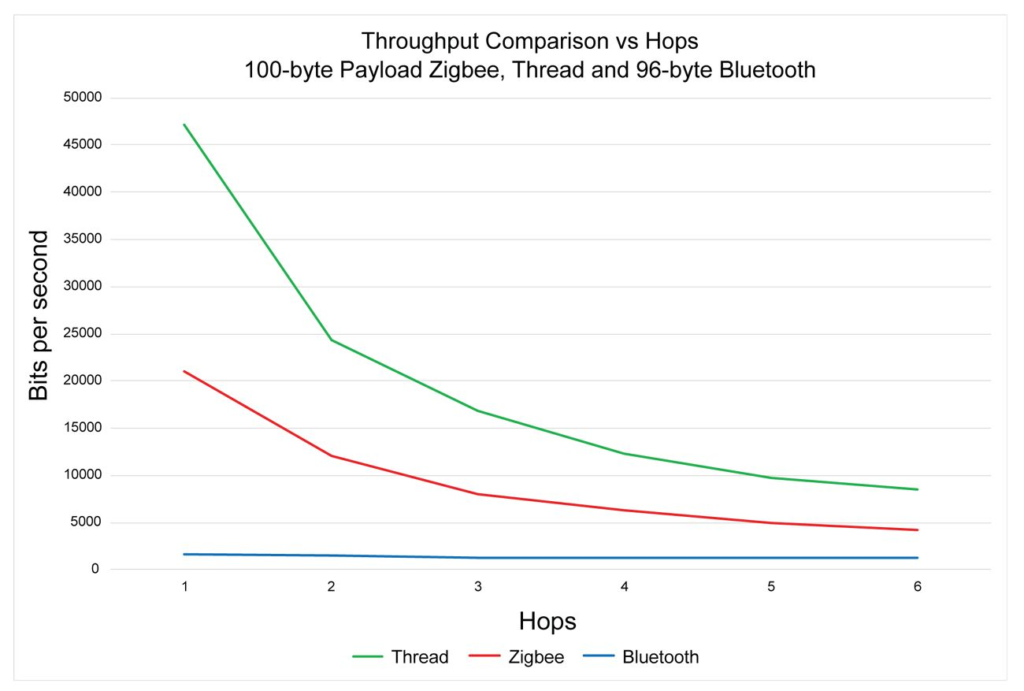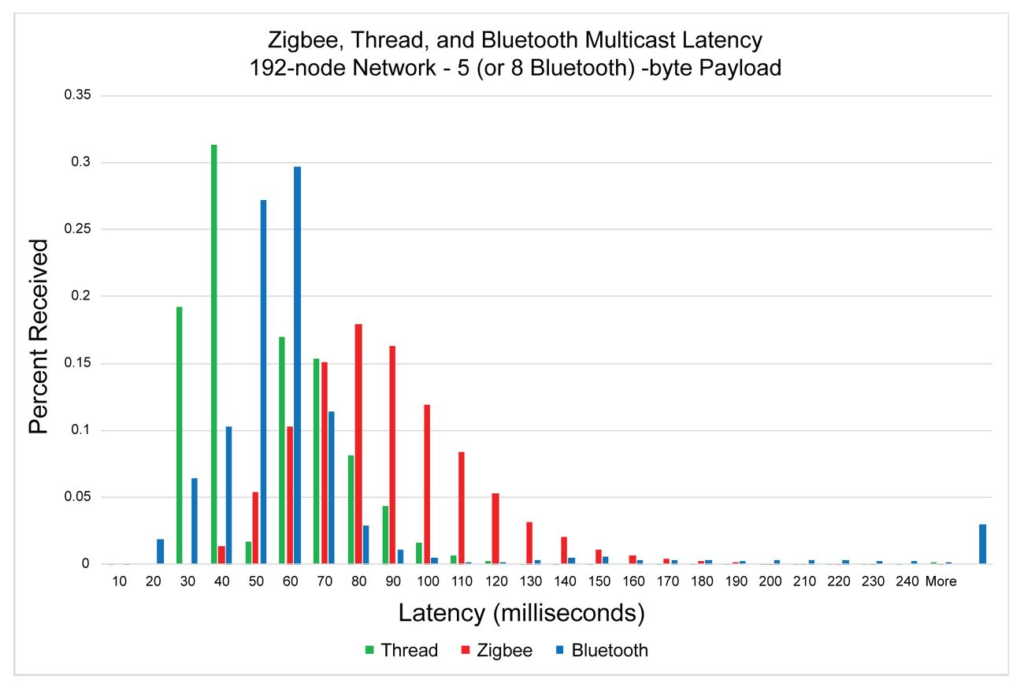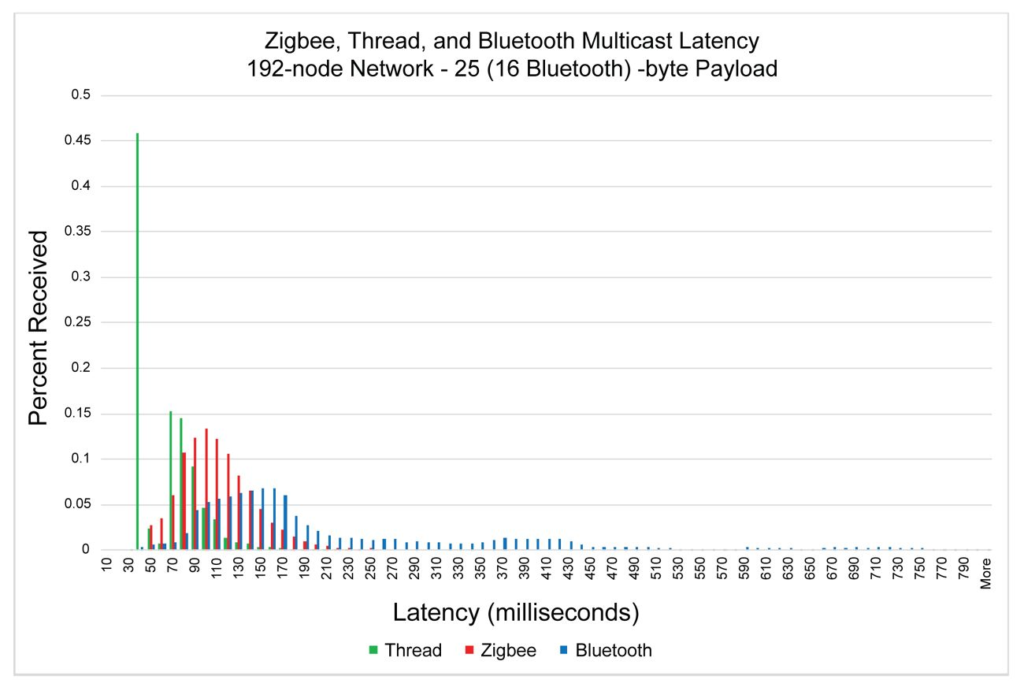Silicon Labs have a useful web site, webinar and slides on “Benchmarking Bluetooth Mesh, Thread, and Zigbee Network Performance”.
The two main measures of performance are throughput, the rate data transfer that can be achieved (in bits per second) and latency, the time taken for data to cross the network.
With a typical implementation of 6+ hops, throughput converges to a similar order of magnitude for all the protocols:

In real use these protocols only support of the order of low thousands of bits (not bytes!) per sec and should therefore only be used for sending small amounts of data that don’t change very often.
For a small payload with 192 nodes, Zigbee has lowest latency and Bluetooth has greatest variation of latency of 20ms to 200ms:

For a larger payload, the Bluetooth latency has a larger range of up to 750ms:

Whether the variation of latency matters depends on your particular solution. Which technology is best depends on what you need to accomplish. For example, in a Bluetooth lighting scenario you might not want some lights to come on immediately and far ones to come on up to a second later. For sensing, the delay usually doesn’t matter.
You also need to consider other factors such as interoperability, scalability, security, reliability and ease of deployment. For example, Zigbee is less scalable and Silicon Labs recommends a maximum of seven hops otherwise the network becomes congested due to re-tries. Bluetooth has especially good interoperability because it is ubiquitous on smartphones and other devices. It also works reliably in industrial situations and has double encryption.
All protocols can be difficult to deploy due to the lack of off-the-shelf general solutions outside specific verticals such as lighting and home automation.
Silicon Labs have a more specific paper on Bluetooth Mesh Network Performance.
Read about Beacons and the Bluetooth Mesh